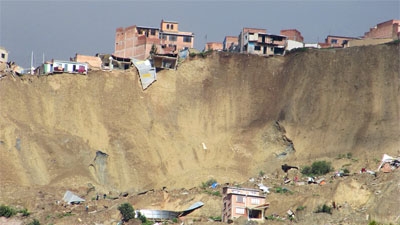The effects of extreme climate are becoming a major problem for a large share of the population. Increasingly, climate change is directly affecting different parts of our planet. One of its most visible consequences is the change in precipitation patterns. In some areas, rainfall has increased regardless of the season whereas in others it has become practically non-existent.
Droughts, floods and landslides are some of the negative effects of climate change in Bolivia. One of the most affected groups is also the most vulnerable: the thousands of low-income citizens who not only face losing their homes and possessions but are also cut off from the rest of the country when a natural disaster strikes.
To address this problem, the Bolivian government launched the Emergency Recovery and Disaster Management Project (PREGD) with World Bank financing for US $9.2 million. The project will benefit more than 400,000 people from five regions around the country.
“Previously, when it rained no one could travel; we could have died of starvation, we were completely cut off. Now it’s different. With the new bridge built, we can transport our farm produce in large-capacity trucks,” said David Solano, a resident of San Pedro in Santa Cruz Department, one of the 60 municipalities where infrastructure works have been built with project financing.
Prevention is a key strategy
By September of this year, 225 projects are expected to have been completed, including the rehabilitation and rebuilding of roads, education and health facilities, waterworks and drinking water systems, as well as the construction and/or rehabilitation of bridges and river flood walls.
In addition, US$ 1.4 million will be invested in strengthening the National System for Risk Reduction and Disaster Response (SISRADE) implemented by Bolivia’s Ministry of Civil Defense.
“PREGD’s main contribution is helping to design instruments and tools that allow for the incorporation of disaster risk management at the different planning levels,” said the Vice-minister of Planning and Coordination, Flavio Rivas.
The project not only rebuilds damaged infrastructure in affected zones, but also works in areas vulnerable to weather hazards that can seriously affect local populations.

